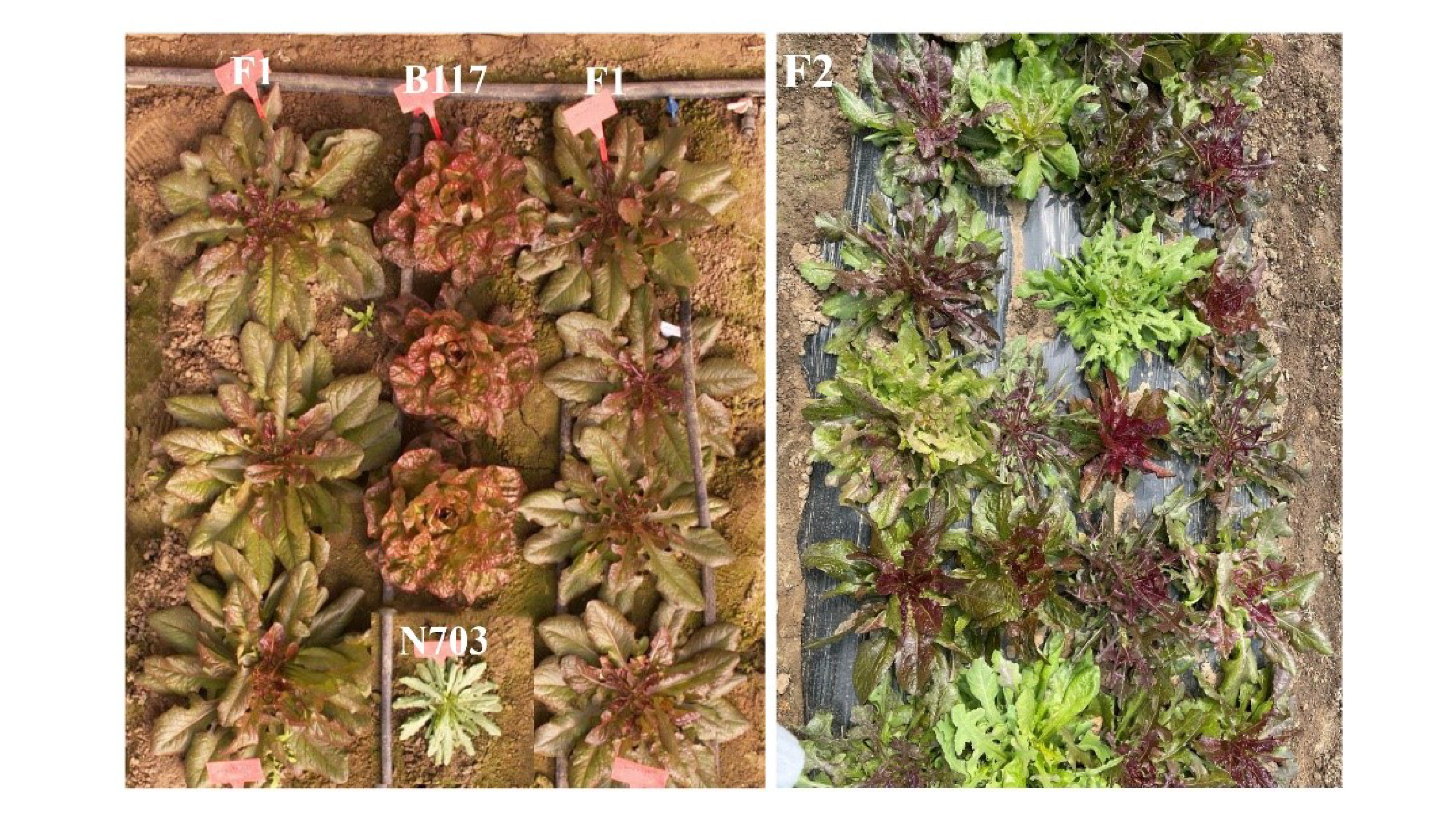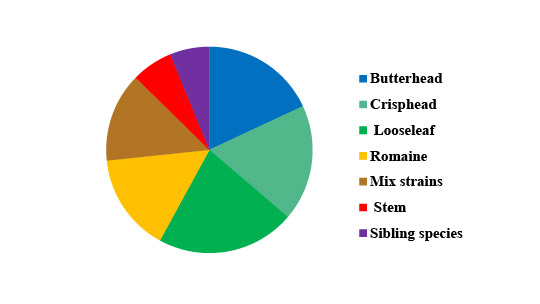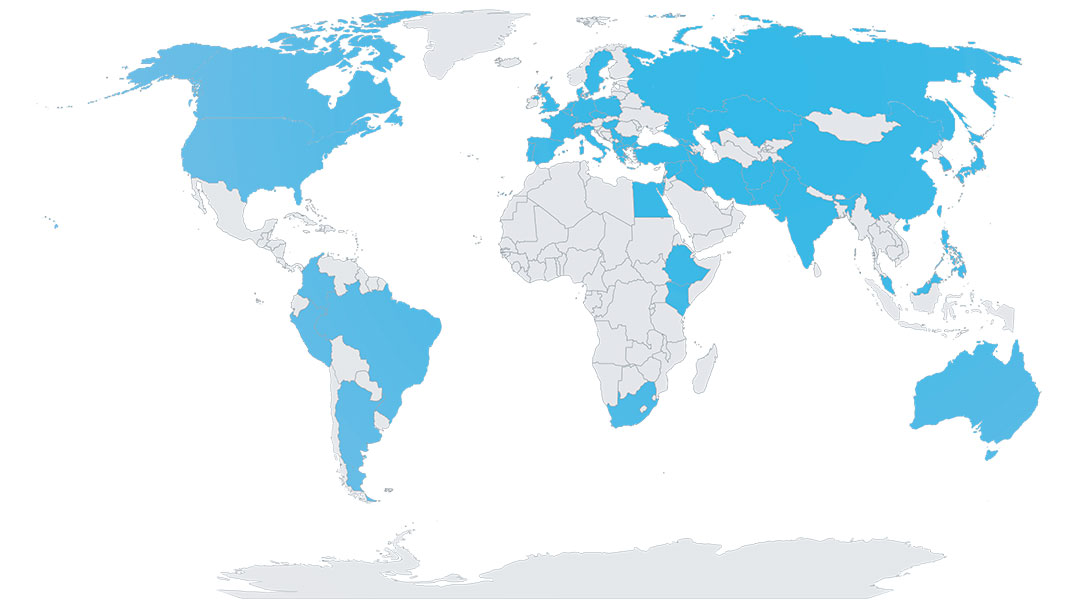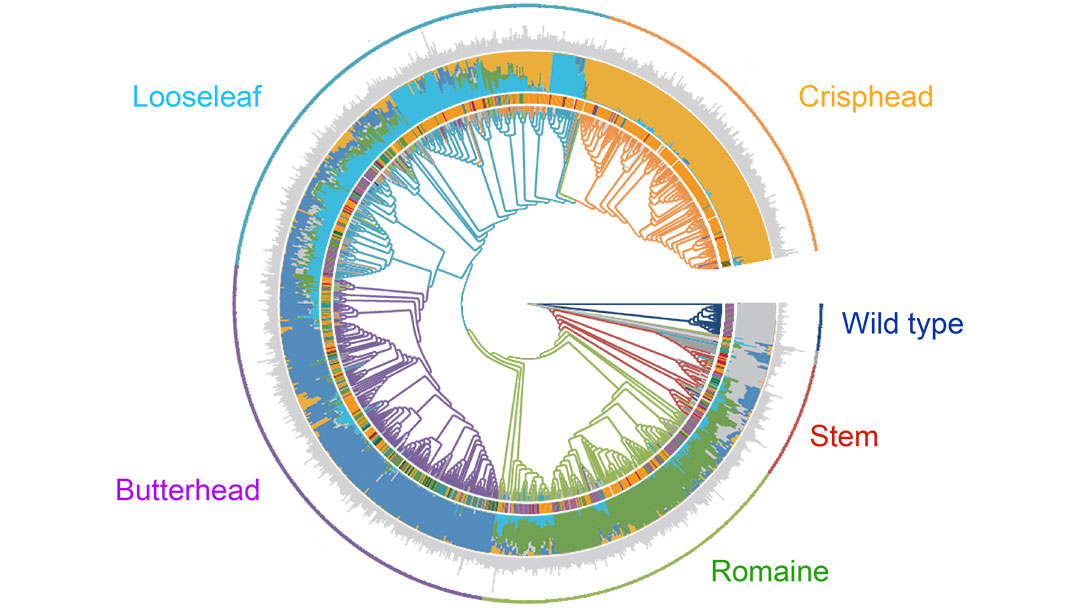The image on the left shows the performance of F1 and F2 after a cross between the wild relative species (Lactuca Serriola L.) N703 and the cultivated species B117 (Lactuca sativa var. capitata). The leaves of N703 are green and leaf margin is deeply dissected, while the leaves of B117 have color of anthocyanin and leaf margin is entire. The leaves of F1 are between their parents in color and all dissected, and F1 shows obvious heterosis in biomass compared with its parents. The F2 showed red-green separation in leaf color, and the leaf margin is dissected or entire. In addition, we have additional 50 populations, 10 of which are using BSA to map genes for 7 important traits, leaf margin, leaf shape, degree of blistering, leaf color, spottiness, plant architecture, and heading.

In total, 1,333 germplasms are collected from 49 countries. Among these germplasms, there are six main cultivar groups (Butterhead, Crisphead, Stem, Looseleaf, Romaine and Mix) and wild relatives, and each type includes many varieties. In detail, the proportions of each type are Butterhead (237 or 18.1%), Crisphead (239 or 18.2%), Romaine (202 or 15.4%), Stem (85 or 6.5%), Looseleaf (285 or 21.7%), Mix strains (184 or 14.0%), and wild relative species (81 or 6.1%). In addition, the lettuce breeding group (LBG) in Beijing Academy of Agriculture and Forestry Sciences crossed different types by traditional breeding methods, and currently there are 51 F1 & F2 established populations.

The left figure shows the countries where 1,333 germplasms have been collected are widely distributed throughout the world on six continents. The Asian countries are China, Afghanistan, Armenia, India, Iran, Iraq, Israel, Japan, Kazakhstan, South Korea, Pakistan, Syria, etc. The Europe countries are Albania, Germany, Belgium, Bulgaria, Denmark, England United Kingdom, France, Greece, Hungary, Italy, Macedonia, Sweden, Malta, Spain, Netherlands, Poland, Portugal, Romania, etc. The North America countries are The United States and Canada. The South America countries are Brazil, Argentina, etc. The Africa countries are Egypt, Ethiopia, Kenya, etc. The Oceania countries is Australia.

In terms of different biotechnologies, scientists have proposed the upcoming breeding approach or stage such as so called 5G breeding approach (Varsheny et al., 2020) and breeding 4.0 (Wallace et al., 2018). The most important features of these concepts are 1) the big data accumulation in a specific crop including all type of omics data and breeding information, which could be utilized to design the new breeding strategy and efficiently enable the aggregation of valuable traits, and 2) new biotechnology techniques such as genome editing that could help breeders gain wanted traits more effectively than traditional methods. The left figure shows a summary of 5G breeding approach.

Whole genome re-sequencing datasets of 1048 varieties were used to perform DNA polymorphic analysis. The genetic variations including single nucleotide polymorphisms (SNPs) and structural variation (InDels) focuses on those with important aspects of lettuce diversity. The left figure displays the phylogenetic relationship of these 1048 strains via 300k SNPs. All cultivated lettuce forms a monophyletic clade, which is clearly separated from the wild lettuce. This result suggests that cultivated lettuce may have originated from a common ancestor. Stem lettuce is closer to wild lettuce than leaf lettuce, which indicates that stem lettuce is the most advanced from wild lettuce, followed by Romaine, Butterhead, looseleaf, and the most recent Crisphead.
